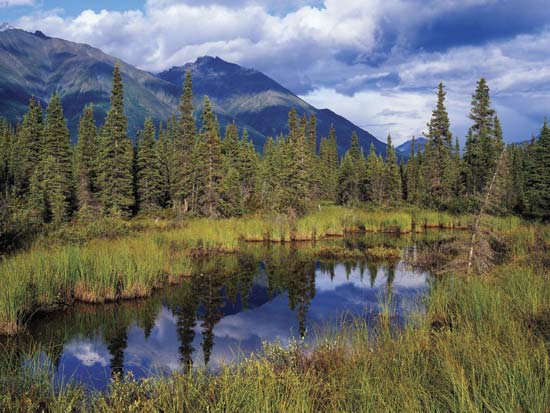February 18, 2014 – When we think about forest loss we usually talk about the Amazon or Congo river basins. These tropical rainforests are considered critical to maintaining a carbon balance because they are the lungs of the planet. But it turns out that boreal forests (those pine and fir forests that dominate from the mid to sub-polar latitudes) may be as critical in addressing atmospheric warming.
A new study published in the last week looks at the impact of converting forest to agricultural use. It shows in general that converting forest to agricultural land regardless of location destroys the aggregate structure of soils and contributes to increased CO2 in the atmosphere.
The study reviews 119 published papers and creates a dataset of 453 sites where forests have been converted for agricultural use. Sites are assessed by forest type, cultivation stage, climate and soil properties. At 98% of the sites soil sequestered carbon stocks show a decrease. At the remaining 2% carbon stocks in the soil actually increase. On average across all sites sequestered carbon stores show a decrease of 43.1%. Other factors that play a role in the percentage of sequestered carbon decrease include temperature, precipitation, soil pH, clay content and density. The more dense and clay soil types the less the loss of sequestered carbon.
In almost every case the conversion from forest to agricultural use has led to a significant initial decrease in sequestered carbon. After several cycles of cultivation the rate of decrease has slowed. Land use change in temperate forest regions causes the most significant soil carbon loss. Tropical forest areas are second and boreal forests last.
These results were expected since mean annual temperature in temperate and tropical regions produces accelerated breakdown of organic matter. In cooler climates organic matter takes longer to break down and be assimilated by the soil.
Previous studies have for the most part looked at the loss of soil-based carbon in the tropics with the Amazon, Congo and Southeast Asian forests the focus. The data collected and assessed in this study, however, shows that 35% of the global decrease in forest cover globally is happening in boreal regions. These boreal forests are more extensive than either the tropical and temperate forests. Thus boreal forests are a larger carbon sink than either of the other two.
When you consider that it is predicted that the largest increases in atmospheric temperature will occur from the mid-latitudes to polar regions, the domain of boreal forests, agricultural conversion in these areas are expected to play a more significant role in contributing to global warming.













